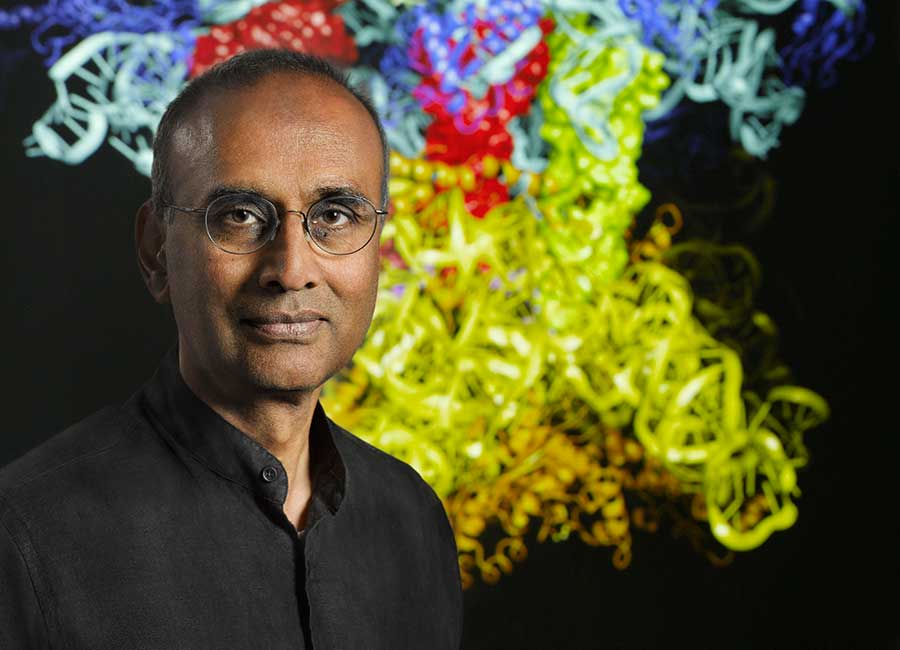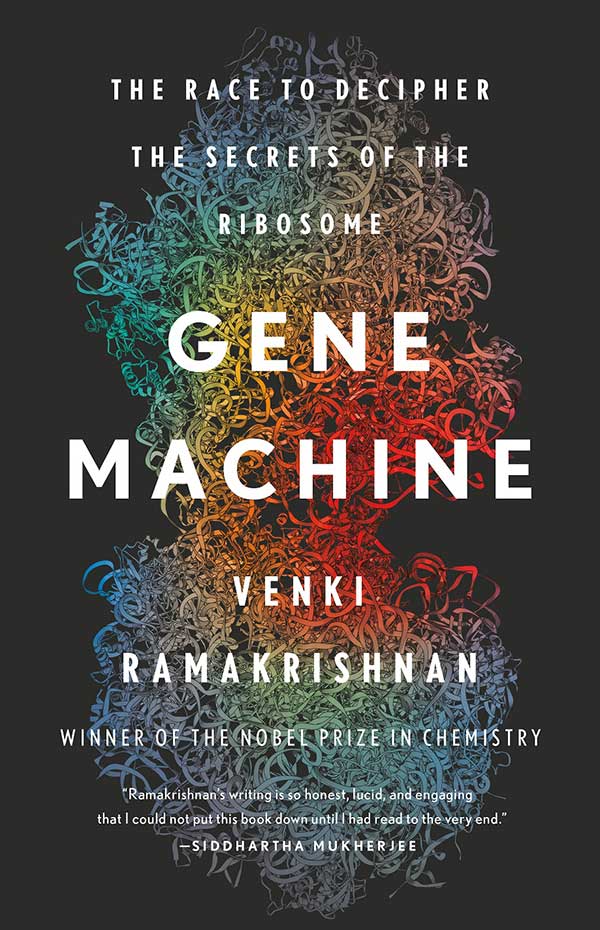
By:
- Mario C. Aguilera
Published Date
By:
- Mario C. Aguilera
Share This:
Nobel Laureate Returns to UC San Diego Crossroads
Public lecture by former graduate student to reveal the realities of life in science and the race to unlock a Nobel Prize-winning mystery
“The passion for discovery, the frustration of experiments gone awry, the personal and professional struggles that accompanied the road to scientific success come alive in this engaging account.” – Jennifer Doudna, foreword, “Gene Machine: The Race to Decipher the Secrets of the Ribosome”
Long before he won the Nobel Prize for his contributions to cracking a major biological mystery, served as president of the Royal Society in London, published a popular science book and other noted accomplishments, Venkatraman “Venki” Ramakrishnan made a critical switch on his career path. After being awarded a Ph.D. in theoretical physics, Ramakrishnan decided to plunge into biology.

Venki Ramakrishnan. Photo by Max Alexander
The first stage of that shift, which would eventually lead Ramakrishnan on a road to deciphering the structure of the key genetic machinery of life, unfolded at UC San Diego, where he spent two years as a biology graduate student in the mid-1970s. He returns to UC San Diego for a public lecture and book signing on Feb. 15 at 3 p.m. at the Conrad Prebys Concert Hall (the lecture is free but attendees must register here).
During the presentation, Ramakrishnan will delve into his life and backstory, which come alive on the pages of “Gene Machine,” his recently published book about the mystery of ribosomes, the molecular nanomachines that translate our genes into proteins. Not only was the solution of the structure of ribosomes a crowning achievement, it has had ongoing significance in understanding the mechanisms of antibiotics and the discovery of sorely needed new antimicrobial molecules.
“At the lecture, people will hear me speak about the mother of all molecules,” Ramakrishnan said of ribosomes during an interview from his office at the Medical Research Council Laboratory of Molecular Biology in Cambridge, UK. As with the book, Ramakrishnan will also discuss the inner workings of science and depict scientists as human beings, as well as provide an insider’s view of the Nobel Prize-winning race to unlock the structure of ribosomes.
“(The lecture) is going to open the window into what science and scientists are like,” said Ramakrishnan. “It will cover what high-stakes science looks like from the inside. But, above all, it’s a story with a narrative. It’s a story about a quest and how people competed to arrive at the structure of this ancient molecule.”
Ramakrishnan describes the ribosome as “the mother of DNA” because every molecule in every cell in every form of life was either made by ribosomes or made by enzymes that were themselves made by ribosomes.

He credits UC San Diego as a young and pioneering university with giving him the unusual opportunity to join its biology graduate program, given his background in physics. Ramakrishnan singles out Dan Lindsley, a biology founding faculty member who passed away in 2018, with a willingness to take a chance on Ramakrishnan and his evolving aspirations.
“UC San Diego played a key role in my life by allowing me to transition to biology,” said Ramakrishnan. “Without that I would never have made it as a biologist.”
As a graduate student, Ramakrishnan was allowed to take undergraduate biology courses to gain an understanding of the field from scratch. He credits instructors such as Distinguished Professor Emeritus Paul Price and his “outstanding” teaching in biochemistry.
Ramakrishnan became a member of Distinguished Professor Emeritus Maurice Montal’s laboratory, where he embarked on his first steps in an experimental biology laboratory. His passion and focus in experimental biology solidified during this time with his first publications in the new field. While there, he read a Scientific American article about ribosomes that changed his life. After two years at UC San Diego, Ramakrishnan accepted a postdoctoral position at Yale, where his pursuit of the ribosome structure began in earnest.
While “Gene Machine” delves into the science of this pursuit, it also probes intersecting human aspects of the ribosome race.
“Most science books sanitize or white wash what it’s like to do science,” said Ramakrishnan. “But the reality is that science doesn’t work that way. Science is done by people, and people are humans—they make mistakes. They have egos. They have jealousies. With this book I wanted to lay it all out there… What does it feel like to be competing and sometimes collaborating? It’s a human drama with all the twists and turns.”
Share This:
You May Also Like
Stay in the Know
Keep up with all the latest from UC San Diego. Subscribe to the newsletter today.


